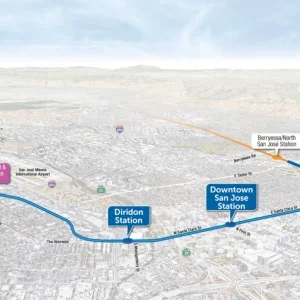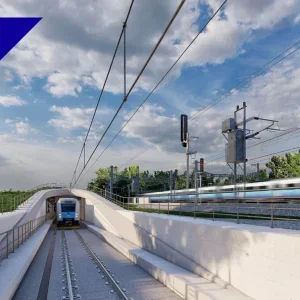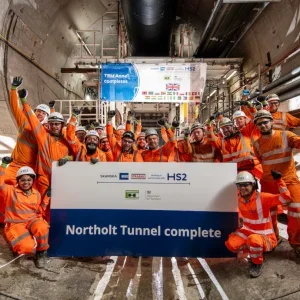On 12 January, instrument monitoring in the tunnel excavations at Pinheiros Station, on São Paulo Metro’s Line 4, gave no warning that something was about to go seriously wrong. Data collected and studied in the preceding hours “were normal” and the shape of the NATM works were “within the design allowances”, the contractor said.
The warning came from the safety supervisor, working beside them in the east platform tunnel. Evacuate. The workers had only minutes. They ran, abandoning the first bench they’d mostly completed and the work that had been underway to place extra lining support at the lower levels of the walls. Behind them, the tunnel was beginning to collapse.
Later, they said the collapse appeared to start slightly beyond the middle of the tunnel, but short of the metro tunnel. Progressive failure of the tunnel saw it unzipped, all the way back to the station shaft – where the workers had escaped by lift. Fortunately. The east wall fell under the landslide, which also swept vehicles down into the pit.
Oddly, the tower crane beside the shaft and offset from the tunnel, stood undamaged on its foundations, soil having swept through and around the piles keyed into bedrock – soil that had come from behind it, over where the platform tunnel had burrowed and first fell, it would appear.
Seven people were killed that day. Cars from the street were retrieved from the 32m deep hole at the crushed tunnel. Buildings were evacuated and demolished.
Today, what was a 40m id shaft is now an open excavation, the slopes benched, anchored and drained to ensure the stability of the site. A battery of investigations are underway, one of them criminal. Investigators for many parties are leafing through documents, beginning to probe the collapse site, working independently to piece together what happened as they start from data on the design and construction procedures.
The contractor on the US$875M project, Consorcio Via Amarela (CVA), told T&TI that excavation of the shaft began in December 2005. The geology near the riverside station consists of alluvial deposits, Tertiary sediments and gneiss.
Excavation in the top 14m of soil created a clam shell, concrete ring, and CVA dug down in two stages for the external ring and internal ring of 40m id, excavating in 1m steps in sectors of 22.5° at a time, working two non-adjacent fronts. The lining support was 300mm shotcrete, 25MPa strength, with two layers of mesh.
The shaft then cut through 13m of rock, advancing in 2m steps to build the external ring. Structural support was 300mm of shotcrete over the first 4m down, increasing to 350mm below and employing mesh and rock bolts to no preset pattern.
With the shaft at 27.2m deep, or three-quarters of its planned depth, last August tunnellers broke out for the east platform tunnel excavation, as the west tube on the opposite side also got underway. To be built 46.4m long x 14.5m high x 18.6m wide, the tubes would be opened with a 6.56m high heading and two benches of 4m each. All three stages would be excavated by drill and blast in three steps – two side drifts and the centre section.
CVA said the crown of the heading was to be supported by grouted pipes at 0.5m centres, and the excavation was further propped by triangular (250mm x 215mm) steel lattice arches spaced every 0.8m. A layer of 15mm shotcrete with steel fibres was sprayed. Ground cover was 20.5m. For the first bench, support of the walls consisted of 150mm of shotcrete with mesh and rockbolts.
By late November, the metro running tubes (8.28m high by 10m wide) being driven by NATM holed through from east and west into the platform tunnels. With a clear run for workers below the river, there was an official celebration.
Prior to the collapse, the heading in the platform tunnels had been opened to their full lengths and in the east tube 90% of the first stage of the bench had been excavated (2m of a side drift had yet to be removed), with 80% in the west. In the east platform tunnel, the overall movement of the roof was about 25mm, within the scope of the design, said CVA. No extra roof strengthening was underway before the collapse, though support was being added at the side drifts of the first stage of the bench.
CVA said physical evidence of problems was detected just before the collapse, enabling the evacuation. It added that the failure was at the tunnel zone, not the shaft. Most of the tunnel collapsed, save for 6m near the metro tunnel.







